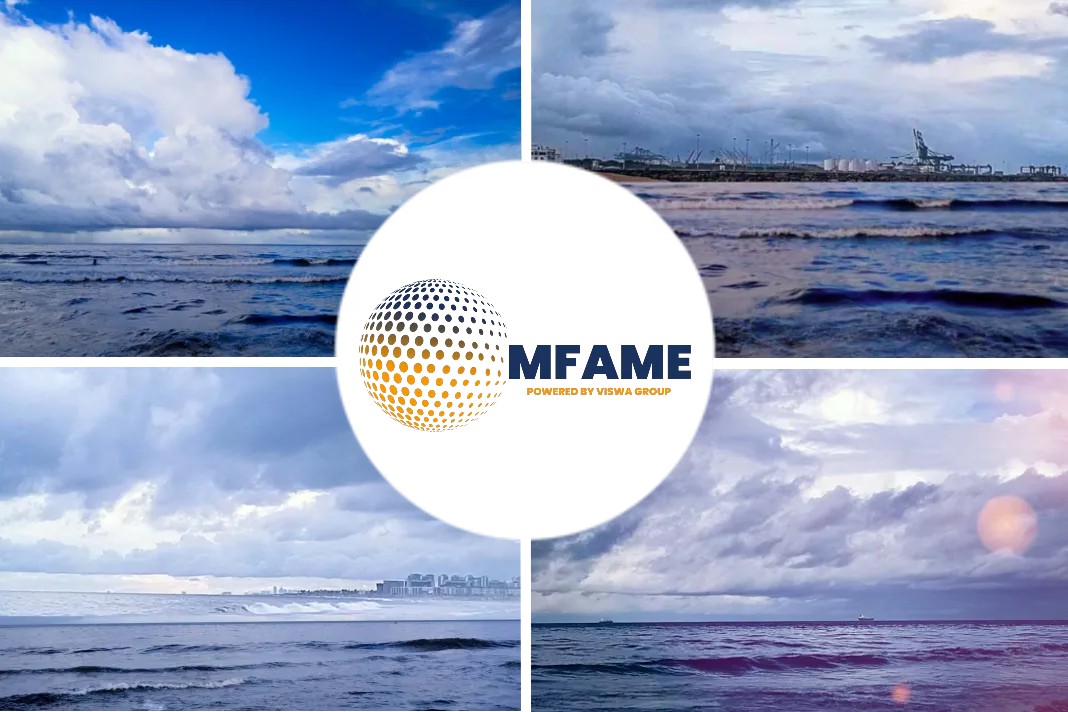Summary
In the early hours of the morning on 22 August 2016, the 399m long ultra-large container vessel CMA CGM Vasco de Gama grounded on the western side of the Thorn Channel whilst approaching the Port of Southampton. The vessel was the largest UK-flagged vessel at the time and had two of the port’s specialist container ship pilots onboard.
The ship ran aground on a rising tide and on a flat shingle/sand sea-bed. A combination of tugs and ship’s engines enabled it to be re-floated soon after grounding.
MAIB has embarked on a study into the human factors associated with the use of modern electronic navigation aids and the implementation of mandated navigation standards.
PPU screenshot showing the grounding position
Safety Issues
- The investigation found that the vessel’s bridge team and the port’s pilots had the experience, knowledge and resources available to plan and execute the passage effectively. However, the standards of navigation, communication and effective use of the electronic charting aids onboard did not meet the expectations of the port or the company.
- A detailed plan had not been produced; the lead pilot had not briefed his plan for the turn round Bramble Bank; the bridge team’s roles and responsibilities were unclear. There was an absence of a shared understanding of the pilot’s intentions for passing other vessels, or for making the critical turns during the passage.
- Neither the ship’s Electronic Chart Display and Information System (ECDIS) not the pilot’s Portable Pilot Unit (PPU) functionality were fully utilized and resulted in each system not providing adequate cross checks or alarms.
- The increasing size of vessels within restricted waterways, is leading to reduced margins of operational safety, and therefore the importance of proper planning and monitoring of the passage cannot be overemphasised.
Actions Taken
ADX Portable Pilot Unit
The MAIB has embarked on a detailed safety study into the human factors issues associated with the use of modern electronic navigation aids and the implementation of mandated navigation standards.
Conclusions
- CMA CGM Vasco de Gama grounded because the track taken to negotiate Bramble Bank did not allow for the environmental conditions and manoeuvring limitations of the vessel.
- The vessel was too far to the north when its turn into the Thorn Channel was commenced, and was unable to sustain the rate of turn required to stay within the dredged channel.
- The pilotage between the Nab Tower and Southampton container terminal was not properly planned, the intended route through the Thorn Channel Precautionary Area was not charted, and key decision points, wheel over points and abort options were not identified.
- The provisional pilotage plan was not properly reviewed prior to arrival, or amended during CMA CGM Vasco de Gama’s inbound pilotage to reflect the lead pilot’s intentions.
- Neither the route plotted on the vessel’s ECDIS and paper charts, nor on the PPU was achievable given the environmental conditions.
- The Bramble Bank turn was not executed in accordance with the guidance provided by the port or the intent given to the master by the lead pilot.
- The absence of a charted pilotage plan meant that the master, his bridge team and the assistant pilot were unable to monitor the lead pilot’s actions and the vessel’s progress during the execution of the Bramble Bank turn.
- Significant weaknesses in the management of bridge resources were evident on board CMA CGM Vasco de Gama. Poor levels of information exchange and communication meant that the bridge team and lead pilot did not share the same mental model.
- The lack of a shared understanding of the pilot’s intentions prevented the bridge team from providing the support to challenge or seek to clarify the pilot’s actions.
- The master, the assistant pilot and the bridge team became disengaged from the pilotage process and allowed the lead pilot to become an isolated decision maker and a single point of failure.
- CMA CGM Vasco de Gama’s primary means of navigation, ECDIS, was not being used effectively or in accordance with expected standards. Accurate pilotage routes were not being charted, safety parameters and alarms were not set up and the most appropriate display screen setting was not being selected.
Recommendations
ABP Southampton have been recommended (2017/144, 2017/145 and 2017/146) to improve their bridge resource management for its pilots; to consider the provision of provisional pilotage plans to vessels prior to pilot embarkation; to review its implementation of procedures and to improve standards of communication.
CMA Ships have been recommended (2017/141, 2017/142 and 2017/143) to review the implementation of company procedures for passage planning and use of ECDIS and to include pilotage and bridge team/pilot integration in its internal audit process.
Did you subscribe for our daily newsletter?
It’s Free! Click here to Subscribe!
Source: MAIB

















